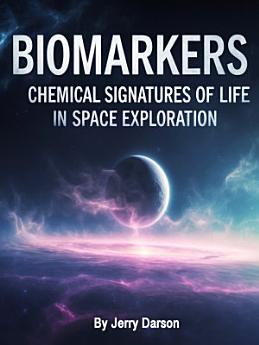Biomarkers: Chemical Signatures of Life in Space Exploration
About this ebook
The study of biomarkers in space exploration is rooted in the recognition that life, as we know it, leaves behind distinctive chemical footprints. These can be generated through metabolic processes, cellular decay, or even environmental interactions involving living organisms. For instance, the presence of methane in the Martian atmosphere has generated considerable interest because, while methane can be produced abiotically, it is also a byproduct of microbial life on Earth. Differentiating between biological and non-biological sources of such molecules is a central challenge in astrobiology.
Understanding biomarkers also requires context. Environmental conditions—such as temperature, radiation levels, and chemical composition—can influence the formation, alteration, or destruction of potential biosignatures. This means that detecting a biomarker isn't just about identifying a molecule; it involves interpreting it within its geological and atmospheric setting. A molecule that is a strong biomarker on Earth may not hold the same implications on Mars or a distant exoplanet, where environmental processes can mimic or obscure biological signatures.








